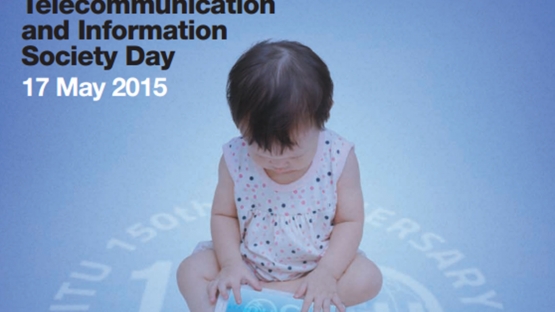World Telecommunications and Information Society Day, celebrated each year on May 17th, offers an annual reminder of the expanding role played by communication technologies in our professional and social lives. This year's commemoration will mark the passing of exactly a century and a half since the International Telegraph Convention was signed in Paris in 1865. Since then, communication technologies has matured immensely-together, cellular networks and the Internet facilitate intercontinental business transactions, social engagements, and academic endeavours alike. Since the advent of the commercial Internet, the IAEA's technical cooperation programme has leveraged this potential to connect students with teachers, experts with colleagues, and those in need with those who may help.
Access to affordable and speedy communication mediums have shown themselves capable of accelerating learning and knowledge-sharing between countries and peoples. The theme of this year's World Telecommunication Day, "Drivers of Innovation," reflects that fact and hopes to unite us through shared networks and a common goal. Through a series of remote-learning initiatives, the Agency is driving innovation and research, not just in the nuclear industry, but in medicine, agriculture and in environmental studies.
Recent years have witnessed novel developments in the field of nuclear medicine-hybrid imaging techniques, new analysis methods, and computed tomography procedures are increasingly adopted by medical facilities around the world. However, while IAEA Member States have made notable efforts to embrace these new techniques, gaps in knowledge and expertise remain, especially in low- and middle-income countries (LMIC). In some regions, the nuclear medicine discipline has not yet reached the critical mass necessary to justify targeted training programs, and elsewhere, the available training programs do not satisfy the evolving requirements of the field.
Aware of the need to develop remote, accessible and up-to-date training opportunities, the IAEA officially launched the Distance-Assisted Training Online (DATOL) platform on the margins of its 2014 General Conference. This online training platform aims to support the development of the knowledge necessary for nuclear medicine professionals to conduct high-quality studies and deliver safe, appropriate medical services. The e-learning platform is available through the Human Health Campus-an IAEA-developed resource where health professionals can consult authoritative educational materials.
The success of remote learning initiatives has led to widespread adoption across all technical cooperation regions. In the Asia & the Pacific region, for example, two e-learning courses on clinical oncology were developed in 2014, under an ongoing technical cooperation project1. Their aim is to enhance and complement existing training opportunities for continuous professional development in the fields of nuclear oncology and nuclear cardiology-the new modules will be launched in 2015.
In the Latin America and Caribbean region, the development of a sustainable knowledge management culture is of paramount import. In the 1960s and 1970s, several IAEA Member States in the region developed strong nuclear workforces. Unfortunately, these scientists and engineers will begin retiring in the coming years, creating capacity and knowledge gaps as they depart. To help preserve, share and transfer their valuable knowledge, the IAEA supports ongoing training for professionals engaged in the nuclear industry. This is achieved through Postgraduate Educational Courses (PGECs), distance learning, and the establishment of knowledge databases.
Through an ongoing TC project, and in cooperation with the Latin American Network for Education and Training in Nuclear Technology (LANENT), the Agency is supporting the development of integrated databases which provide information on courses, careers, cooperation opportunities, fellowships and educational materials from a wide range of high-quality sources. The goal is to become a reference hub in the region for nuclear education and training for both providers and users - a 'virtual campus' in Spanish, Portuguese and English.
As telecommunication technologies increasingly enmesh themselves into our offices, our laboratories, and indeed our lives, they offer us the opportunity to address our most critical needs. By connecting professionals with complementary knowledge gaps and knowledge capacities, the IAEA can help to ensure that wherever new research emerges, it is quickly shared to the benefit of all.
1?RAS/0/064


